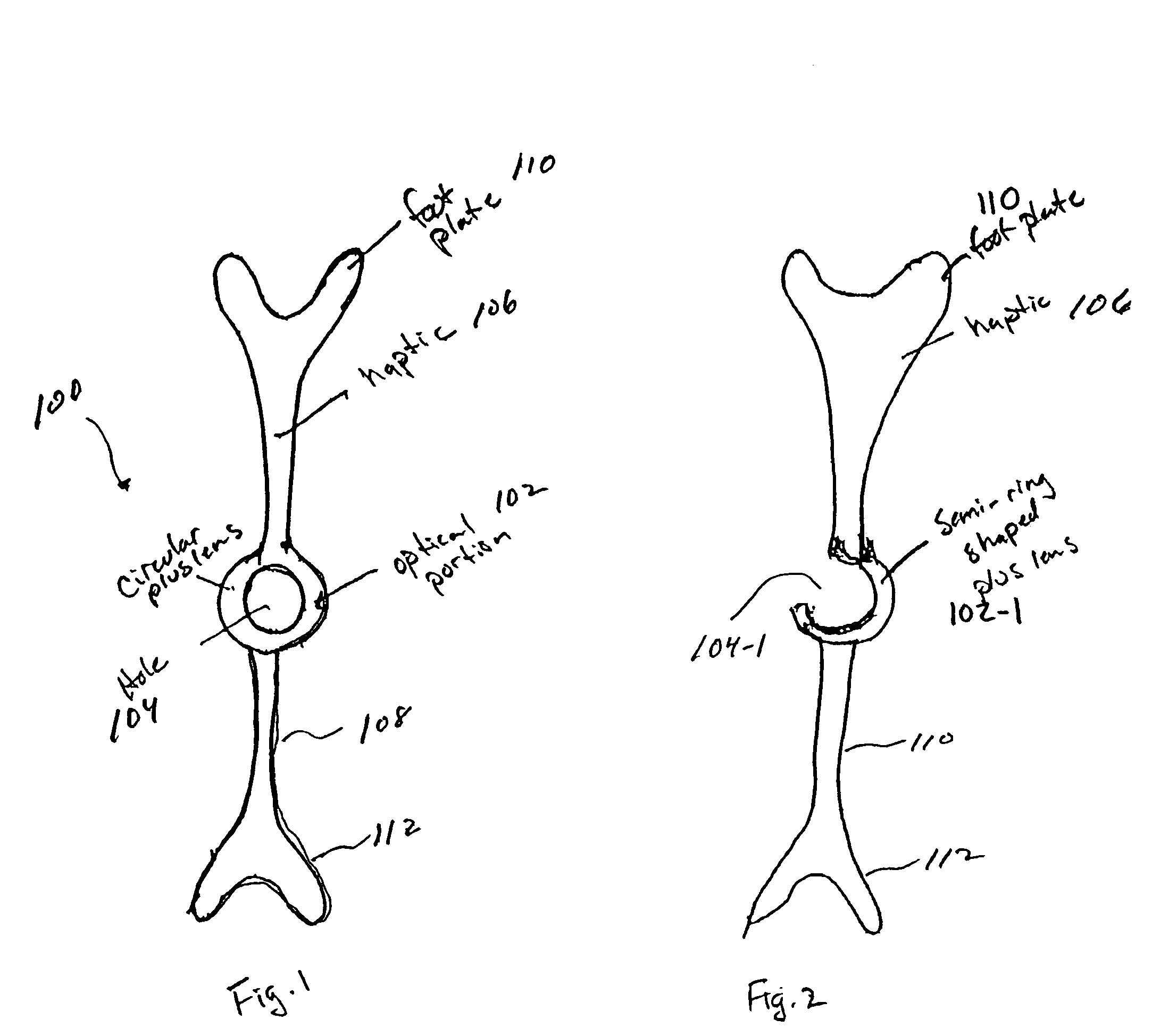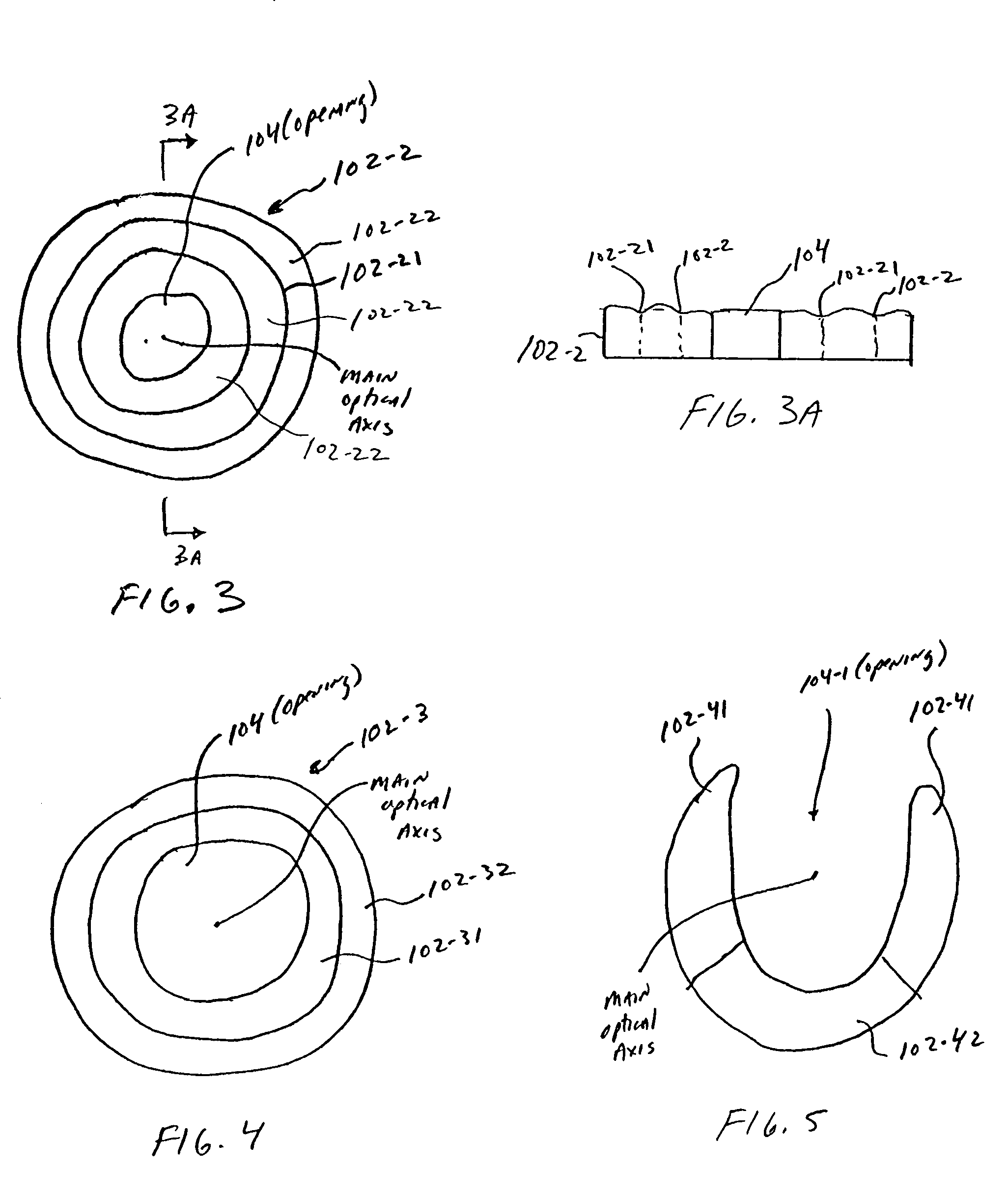Intraocular lens for correcting presbyopia
a technology of intraocular lens and presbyopia, which is applied in the field of intraocular lens for correcting vision, can solve the problems of degrading vision, peripheral vision remains intact, and reading and driving vision can be los
- Summary
- Abstract
- Description
- Claims
- Application Information
AI Technical Summary
Benefits of technology
Problems solved by technology
Method used
Image
Examples
Embodiment Construction
[0048]As shown in FIGS. 1 and 2, a lens system 100 according to an embodiment of the present invention includes an optical portion 102 for use in correcting presbyopia. In this example, the optical portion 102 is preferably circular, substantially circular or doughnut-shaped to act as a plus lens, but can be any shape desired. For instance, as shown in FIG. 2, the optical portion 102-1 can be semi-circularly shaped or crescent shaped. The optical portion 102 includes an opening 104 that can be centered or substantially centered in the optical portion 102, or can be located anywhere in the optical portion 102 as appropriate. Similarly, the optical portion 102-1 can be shaped such that the opening 104-1 is centered with respect to the optical portion 102-1 or such that the opening 104-1 is off-centered by a desired distance.
[0049]The optical portion 102 (102-1), which can also be referred to as a lens, is preferably made of synthetic material, organic material, or a combination of bot...
PUM
 Login to View More
Login to View More Abstract
Description
Claims
Application Information
 Login to View More
Login to View More - R&D
- Intellectual Property
- Life Sciences
- Materials
- Tech Scout
- Unparalleled Data Quality
- Higher Quality Content
- 60% Fewer Hallucinations
Browse by: Latest US Patents, China's latest patents, Technical Efficacy Thesaurus, Application Domain, Technology Topic, Popular Technical Reports.
© 2025 PatSnap. All rights reserved.Legal|Privacy policy|Modern Slavery Act Transparency Statement|Sitemap|About US| Contact US: help@patsnap.com



